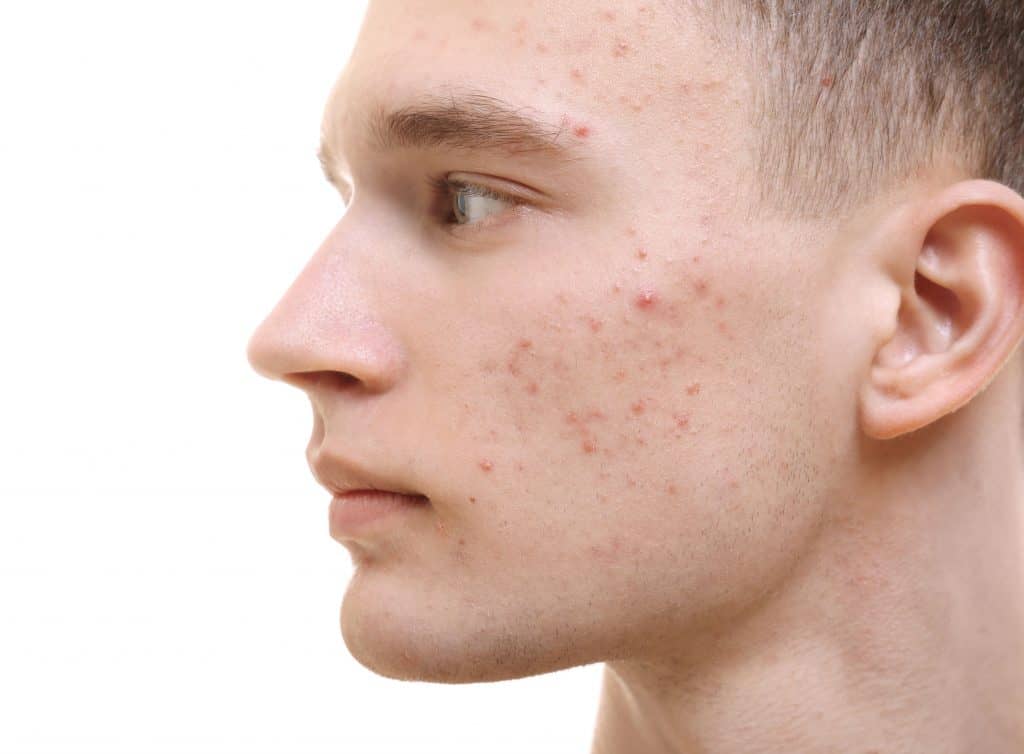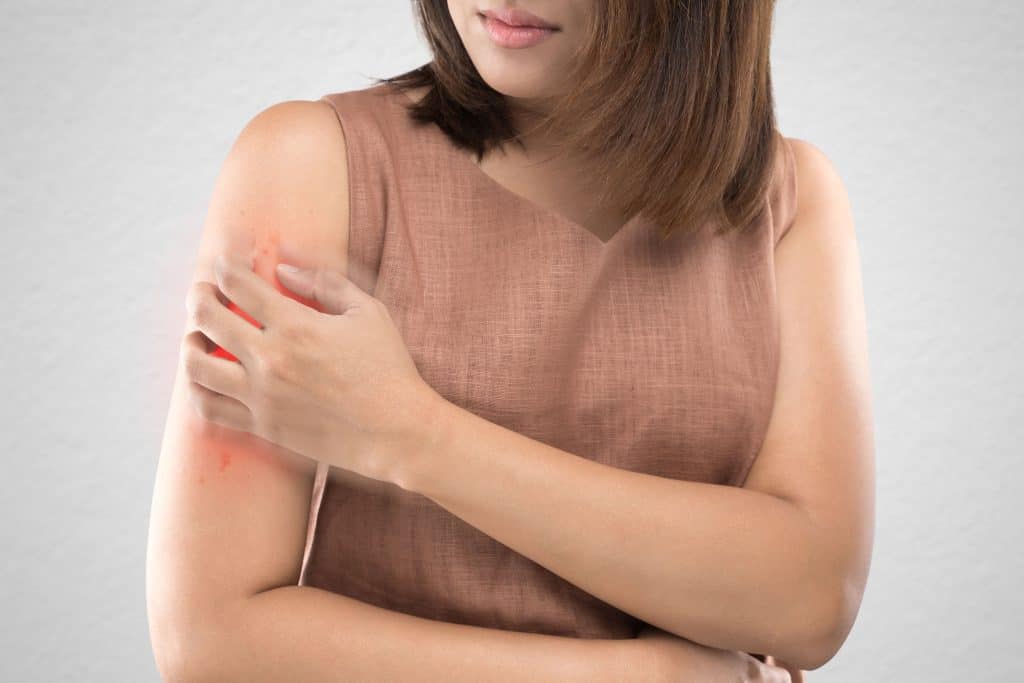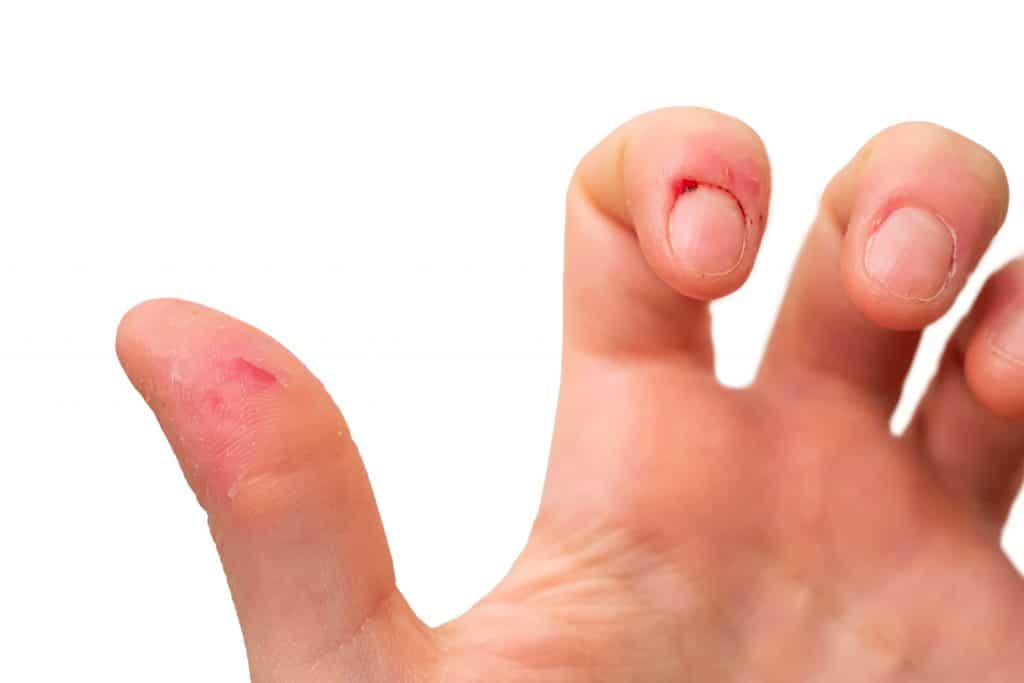Different Types of Chronic Skin Conditions – Description, Treatment, Symptoms
Posted by Prescription Hope - See Editorial Guidelines (Last Updated On: Thu Apr 27 2023)
Millions of Americans are affected by various types of chronic skin conditions every year. Some of these skin conditions can be painful and embarrassing. Chronic skin problems can be difficult to treat, as some patients respond differently to prescribed medications.
So, in this article, we will discuss the different types of chronic skin conditions, their symptoms, and the treatment options available. It is important to note that there are temporary skin conditions that can be severe. However, for the sake of clarity, we will stick to discussing skin problems that are persistent and prolonged.
Before we get into too much detail, though, here is a quick summary to get you started.
Different Types of Chronic Skin Conditions: There are 10 types of chronic skin conditions, with each type affecting people differently and requiring different treatment. Some of these skin conditions can be minor in some instances, while others can be severe, causing pain and irritation. Many chronic skin problems can occur over various parts of your body and can affect people across many age groups. Your dermatologist will be able to tell you which skin condition you are specifically contending with and will be able to prescribe you the right medication.
Here is a list of common chronic skin conditions and everything you need to know about them.
Acne

Acne is an inflammatory skin condition that is most common among teenagers as they go through puberty. However, acne can occur at any age and may be severe. Not only can acne be embarrassing for some, but it can also be painful and cause scarring. It consists of pimples and cysts that appear mostly on the face, neck, shoulders, back, and chest.
Causes and risk factors of acne include genetics, stress, menstrual cycles, hormonal changes, and the use of oil-based cosmetics. There are many treatment options, as well as prevention tactics that can help one deal with acne.
Treatment options include various topical creams, oral medications, and corticosteroid injection. Some acne medications come with severe side effects, so they must be taken under the supervision of a medical professional. Ways to prevent acne include:
- Maintaining a healthy diet
- Refrain from touching your face often
- Wash your face no more than twice a day
- Avoid popping or bursting pimples as this can cause more scarring
- Avoid excess sun exposure
- Avoid stress and anxiety
- Choose makeup that is for sensitive skin
Psoriasis
Psoriasis is a chronic skin condition that is described as red, itchy patches. It most commonly appears on the scalp, eyebrows, knees, and elbows. Psoriasis generally goes through cycles and a person may experience flare-ups for weeks or months at a time. Symptoms of psoriasis may include:
- Red patches of skin with silvery scales
- Scaling patches
- Dry skin that can crack and bleed
- Itching or burning
- Swollen or stiff joints
There are triggers that can cause psoriasis flare-ups which consist of:
- Infections
- Weather (cold and dry conditions)
- Stress
- Injuries to the skin
- Excess alcohol consumption
- Smoking
- Withdrawal of corticosteroids
Treatment options for psoriasis consist of various topical creams, light therapy, oral medicines, and injectable medications.
Rosacea
Rosacea is an inflammatory skin condition that affects the face. It can sometimes be mistaken for acne or an allergy. Rosacea is most common among those that are fair-skinned, and it is estimated to affect more than 14 million Americans. Triggers that can cause rosacea to become worse include:
- Extreme temperatures
- Sunlight and humidity
- Stress and anxiety
- Saunas, hot tubs, and warm baths
- Intense exercise
- Drugs that treat high blood pressure
- Fever, cold, or cough
- Certain foods
Treatment options for rosacea include topical medicines, oral antibiotics, laser treatment, and plastic surgery for those that develop thickened skin.
Eczema
Eczema is a chronic skin condition that is also known as atopic dermatitis. It is most common among young children but can occur at any age. Eczema makes your skin red and itchy, and it can flare-up periodically. Symptoms of atopic dermatitis include:

- Dry skin
- Itching
- Red patches, particularly on the hands, feet, ankles, wrists, neck, upper chest, eyelids, inside the bend of the elbows and knees, and in infants, the face and scalp.
- Small raised bumps
- Thickened and cracked skin
- Raw and sensitive skin from scratching
Risk factors for eczema may include family history, allergies, hay fever, and asthma. Triggers that can worsen this skin condition include obesity, sweat, stress, certain soaps, and allergies. Ways to prevent eczema flare-ups include moisturizing your skin, taking short baths or showers, use skin-sensitive soaps, and dry yourself carefully.
Contact Dermatitis
Contact dermatitis is a skin condition consisting of a red, itchy rash caused by direct contact with a substance. Substances that can cause contact dermatitis may include soaps, cosmetics or makeups, fragrances, plants, and jewelry. You should seek medical attention if the rash continuously becomes worse, widespread, painful, affects face or genitals, or if it doesn’t get better within 3 weeks.
Prevention and treatment are necessary to relieve symptoms. Applying creams or gels can help create a barrier and allow the rash to heal. The biggest step in prevention is determining what is causing the rash. You can then either avoid the allergen and irritant or wear a protective barrier to prevent a reaction.
Cutaneous Lupus
Cutaneous lupus is a chronic skin condition that causes rashes and lesions in areas of the body that are often exposed to sunlight. Therefore, the face, ears, neck, arms, and legs are most commonly affected. Chronic cutaneous lupus is an autoimmune disease that may also be called discoid lupus. This condition may appear as a red to purple scaly rash that can cause scarring. If the scalp is affected, then it may lead to hair loss.
Treatment for cutaneous lupus includes wearing sunscreen and protective clothing to prevent rash and lesions from appearing. Creams and ointments can be used to provide relief. Hydroxychloroquine is an oral medication that may be prescribed to treat chronic cutaneous lupus as well.
Hair Loss
Hair loss is considered a skin condition as it falls under dermatology. The most common form of hair loss is hereditary. Alopecia areata is also a condition that affects the scalp and causes hair loss without causing obvious changes to the skin.
Local steroid injections or steroid creams, lotions, or shampoos may help treat hair loss. These methods may only have limited benefits. Hair transplants may work for some individuals as well.
Nail Disease

Your fingernails and toenails are used to protect tissues and are made up of a hardened protein called keratin. There are various problems that a person can have with their nails including deformities, ingrown nails, infections, nail splitting, and nail ridges. Changes in your nails can be a sign that you have another underlying health condition.
Treatments for nail disease often include oral antifungal medications and medicated nail polish or cream. Self-care for your nails is the best way to prevent severe nail disease and deformities.
Vitiligo
Vitiligo is a chronic skin condition that causes discoloration of the skin in patches. The patches generally grow over time. Vitiligo can affect any parts of the body including hair and the inside of the mouth. This skin condition occurs when the cells that produce melanin either die or stop functioning.
Treatment options for Vitiligo are limited, as therapy can stop vitiligo. However, certain medications and light therapies can help restore the color of the skin. Some individuals that meet specific criteria may be able to receive surgery, which consists of a skin graft or cellular suspension transplant.
Melanoma
Melanoma is a type of skin cancer that falls under the category of a chronic condition. Melanoma is dangerous as it can spread to other organs if it is not treated early enough. It is important to check for new and changing moles, as this can be a sign of skin cancer. Melanoma appears mostly on the legs of women and on the trunk of men, but it can appear anywhere on the body, including places that the sun doesn’t hit.
Melanoma at the early stage can be removed very easily. At the later stages, patients may need farther surgery, immunotherapy, targeted drug treatment, radiation therapy, and chemotherapy.
Conclusion
We hope this has given you a better understanding of chronic skin conditions and how they can be treated. Talk to your dermatologist to determine what specific treatment you need.
If you are struggling to afford any of your prescribed medicines, then Prescription Hope may be able to help. We work directly with pharmaceutical companies to provide patients with their medication for just $60.00 a month through Prescription Hope’s medication access service for each prescribed med . Enroll with us and start saving money.


